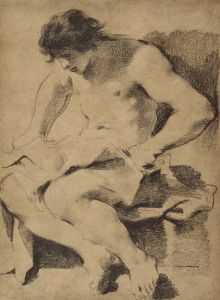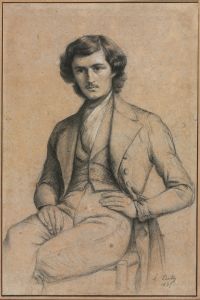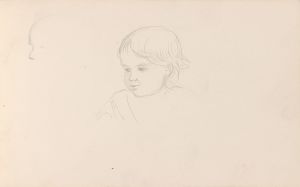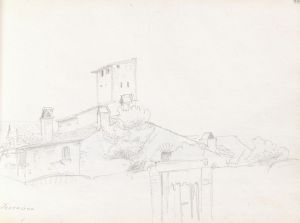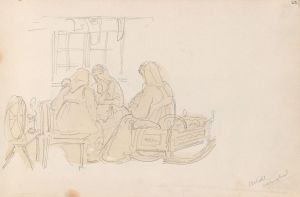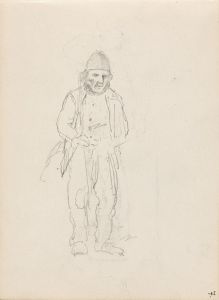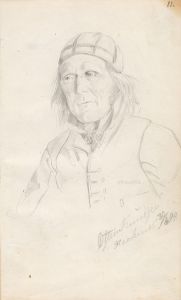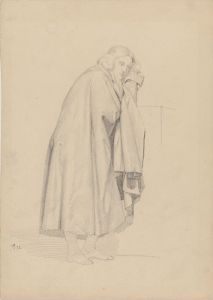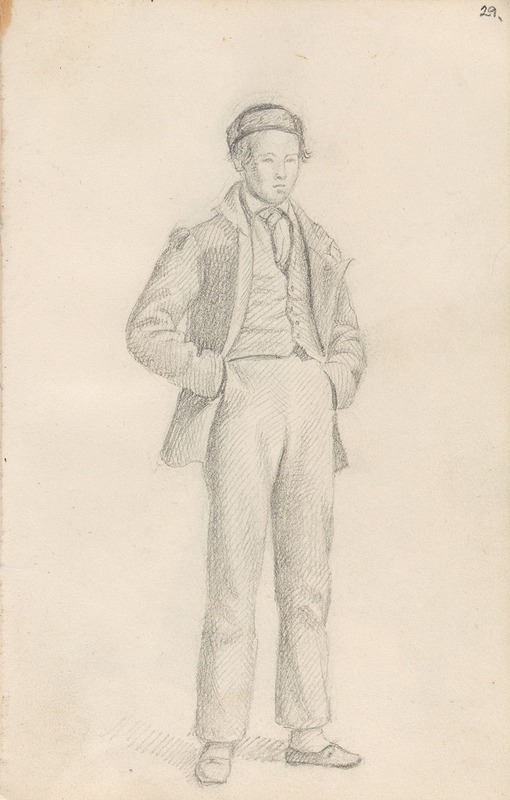
Stående ung mann
A hand-painted replica of Adolph Tidemand’s masterpiece Stående ung mann, meticulously crafted by professional artists to capture the true essence of the original. Each piece is created with museum-quality canvas and rare mineral pigments, carefully painted by experienced artists with delicate brushstrokes and rich, layered colors to perfectly recreate the texture of the original artwork. Unlike machine-printed reproductions, this hand-painted version brings the painting to life, infused with the artist’s emotions and skill in every stroke. Whether for personal collection or home decoration, it instantly elevates the artistic atmosphere of any space.
Adolph Tidemand was a prominent Norwegian painter known for his contributions to the national romantic movement in the 19th century. His works often depicted Norwegian folk life, traditions, and landscapes, capturing the essence of Norwegian culture during a time of burgeoning national identity. One of his lesser-known works is "Stående ung mann," which translates to "Standing Young Man."
"Stående ung mann" is a portrait that exemplifies Tidemand's skill in capturing the human form and expression. Although not as widely recognized as some of his other works, such as "Brudeferden i Hardanger" (The Bridal Procession in Hardanger), this painting still reflects Tidemand's keen interest in portraying the everyday life and people of Norway. The painting features a young man standing, and while specific details about the subject's identity or the context of the painting are not well-documented, the work is consistent with Tidemand's focus on Norwegian subjects.
Tidemand's style is characterized by a realistic approach, with careful attention to detail and a strong emphasis on the emotional and psychological presence of his subjects. In "Stående ung mann," this is evident in the way the young man's posture and expression are rendered, suggesting a narrative or a moment captured in time. The painting likely reflects Tidemand's interest in the individuality and character of his subjects, a common theme in his portrait work.
The broader context of Tidemand's work is important to understanding "Stående ung mann." During the 19th century, Norway was experiencing a cultural renaissance, with a growing interest in defining and celebrating a distinct Norwegian identity. Artists like Tidemand played a crucial role in this movement by focusing on national themes and subjects. His paintings often depicted rural life, traditional costumes, and historical events, contributing to a sense of national pride and cultural heritage.
Tidemand studied at the Academy of Fine Arts in Copenhagen and later in Düsseldorf, where he was influenced by the Düsseldorf school of painting, known for its detailed and realistic style. This training is evident in "Stående ung mann," where the precision of the brushwork and the lifelike representation of the subject demonstrate Tidemand's technical proficiency and artistic vision.
While "Stående ung mann" may not be as famous as some of Tidemand's other works, it remains a valuable piece within his oeuvre, offering insight into his artistic focus and the cultural context of 19th-century Norway. The painting is a testament to Tidemand's ability to convey the dignity and individuality of his subjects, contributing to the rich tapestry of Norwegian art history.
In summary, "Stående ung mann" by Adolph Tidemand is a portrait that reflects the artist's dedication to capturing the essence of Norwegian life and identity. Through his realistic style and attention to detail, Tidemand provides a glimpse into the cultural landscape of his time, making his work an enduring part of Norway's artistic heritage.





